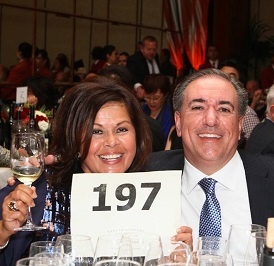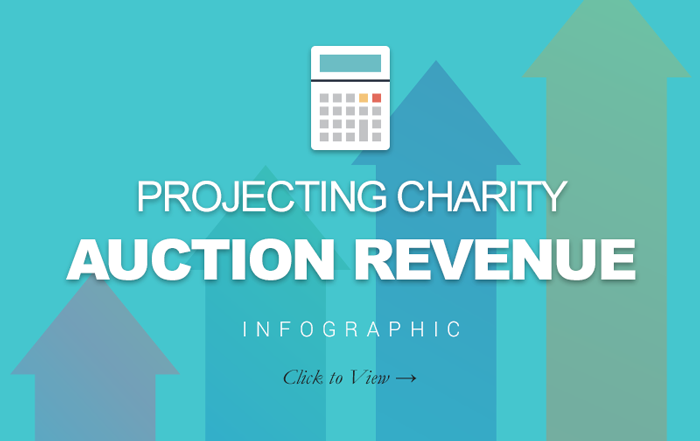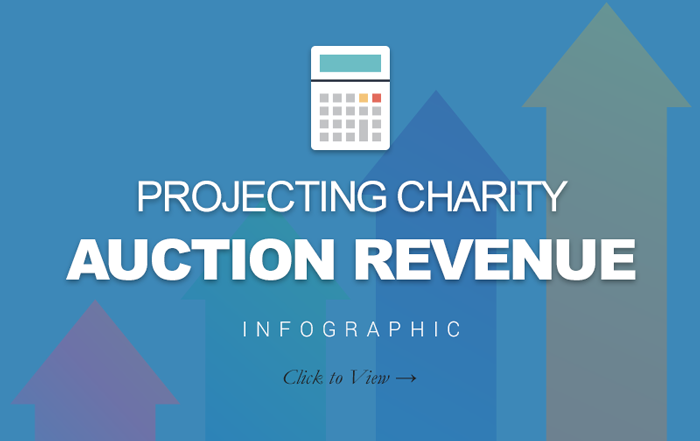“How many auction items do you recommend for a fundraising event with X amount of guests?”
This is a question we get all the time, and for good reason. Include too many, and the items will fetch fewer, smaller bids. Including too few may drive bids higher, but you’ve lost out on revenue bidders would have spent on more items.
Perhaps there’s a better question to ask: How many auction items will we need to meet our fundraising goal?
Most nonprofits look at audience size to determine how many items they need in the auction (more on that below), but today we’ll use an equally important metric: your fundraising goal.
Fact is, the quality of your items can affect the quantity you need to procure.
Using a few simple formulas, you can break down any revenue goal—no matter how insurmountable it may seem—into the approximate amount and caliber of items needed.
To deduce your event’s “magic number” of auction items, check out our handy infographic below.
So there you have it! The steps again:
Set a fundraising goal for the charity auction. (Your total event goal may be higher, depending on other income streams you have incorporated into your event.)
- Figure out how much revenue needs to be generated from the live auction portion (66% of the goal) and silent auction portion (34% of the goal).
- Divide your live auction revenue goal by 0.75 (each item will ideally take in at least 75% of its market value).
- Divide your silent auction revenue goal by 0.50 (each item will ideally take in at least 50% of its market value).
- Add the two numbers (Steps 3 and 4) together. This is the total value of items you need to reach your goal.
- Add up the Fair Market Value (FMV) of your items as they are gathered. Keep procuring high quality items for both auctions until you reach the goal set in Step 5.
A note on consignment items like Winspire’s no-risk travel packages: When adding to your projected FMV total, use the difference between the item’s value and the Nonprofit cost to your organization. For instance, an all-inclusive trip to Puerto Vallarta is worth $10,000 and costs the Nonprofit $4,000; the profit from the FMV would be $6,000
If the item is Priceless, try and estimate what your bidders would be willing to pay.
Additional Guidelines
Live Auctions
For live auctions, limit the selection to (or strive to procure) 8 to 12 items. These should be the premium, buzzworthy items that get everyone’s attention and raise the stakes of your event.
Any more and you’ll risk losing the attention of the audience and control of the evening, no matter how entertaining or funny your auctioneer is. Any less and you’re missing out on key revenue; after all, you’ve gone to all the trouble of hosting an auction – it’s important to make the most of the night.
What should you do with too many or too few live auction items? Check out easy solutions in this related article.
{{cta(‘6dd5b157-115c-469a-b913-7f73a5a29f55′,’justifycenter’)}}
Silent Auction Items by Audience Size

A solid rule of thumb is procuring 1 item for every 2 couples.
For example, a crowd of 500 guests contains 250 couples or “buying units”, so you could feature 125 items in the silent auction.
Knowing not everyone will walk away with an item tends to increase competition.
Bottom line: You want enough items to capture as much money as people are willing to spend. And while our formulas can help estimate the night’s revenue, procuring quality charity auction items is even more important than quantity for a successful event.
{{cta(‘2083c6a1-80f9-43e5-ba7f-2157684db5d1′,’justifycenter’)}}
Your turn – How do you determine the amount of items to include in your auction? Have you found a reliable “magic formula” for your event? Please share in the comments below!


